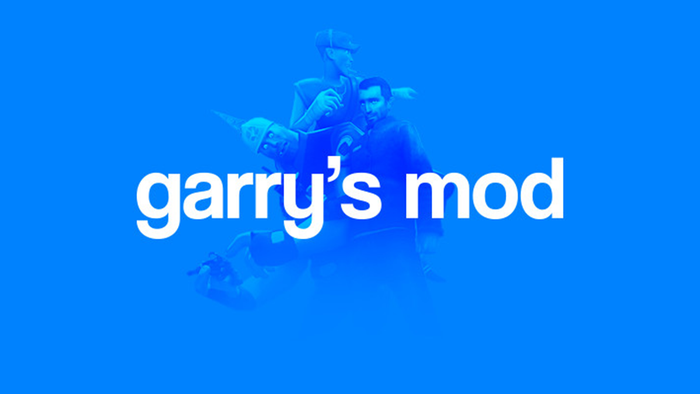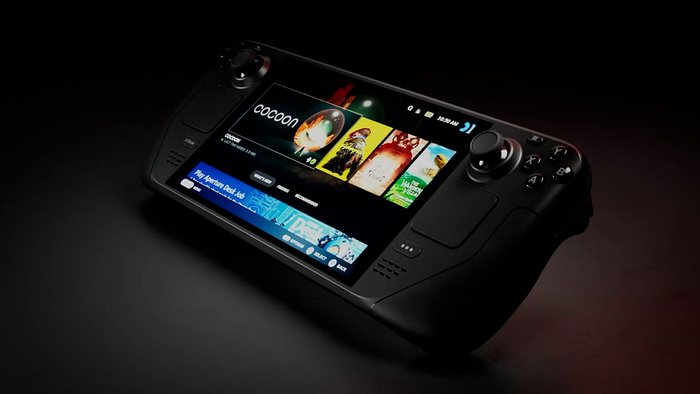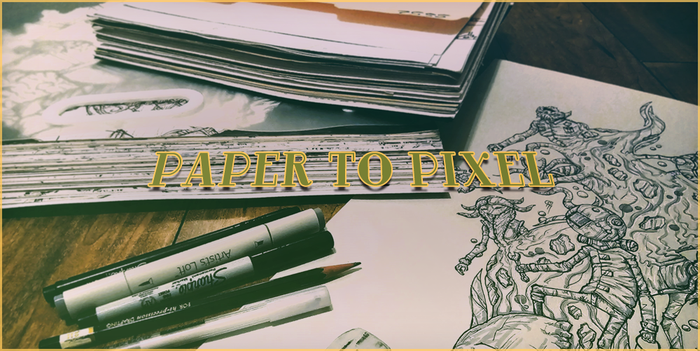
Featured Blog | This community-written post highlights the best of what the game industry has to offer. Read more like it on the Game Developer Blogs.
Enemy Mind’s appeal comes from mixing familiar retro gameplay with the powerful ability to become your enemies. When it became clear that this new mechanic was conflicting with the shmup formula, we had to find new ways to capture the classic feel.

At the end of Schell Games’ 2013 Jam Week, one of our engineers, Mike Traficante, had created a prototype which took the office by storm: Enemy Mind, the retro side-scrolling shoot ‘em up (shmup) where you could possess any enemy you see. Despite being rough around the edges (as prototypes tend to be) the game had undeniable appeal in the combination of its novel mechanic and classic trappings - it was not long before the game was pitched to Schell Games leadership and turned into a full project.
Enemy Mind in action
Shortly into development, however, it became clear that “you can be anything” was such a powerful mechanic that it was disrupting the traditional components of a shmup. Most notably, it undermined elements which contributed to the the genre’s difficulty, such as enemy progression, enemies that affect other enemies, and the functionality of bosses. The result was a game that was fun in short bursts but fell apart in longer sessions, and fans of the shmups of old would quickly note that the game “didn’t quite feel right.”
The two halves of Enemy Mind’s appeal, the ability to capture other ships and its retro foundation, were clearly clashing. However, cutting the mechanic wasn’t an option - it was responsible for getting us greenlit, and was what made our game interesting. The only way we were going to be able to make Enemy Mind work was if we managed to approach that retro “feeling” while still leaving our new mechanic in tact. We had to identify the fundamentals of the genre we were aiming for, and reimagine them to work with our new mechanic.
Finding a Different Way To Create Challenge
One of the defining aspects of the shmups of old was their difficulty. Games like R-Type, Gradius, and Hellfire were all famous for their brutality, with players throwing themselves against the games again and again in order to achieve the coveted “1CC,” or One Coin Clear.
However, the capture mechanic in Enemy Mind complicated typical methods of creating difficulty - the very nature of the game means that introducing a more powerful enemy type also introduces a powerful new tool for the player. If the enemies in the game just got progressively more powerful as the game went on, the player could just claim that power.
In order to bring difficulty back into the game, we had to rethink the way ships related to each other; rather than new ships being strictly better as time went on, they became a variety of tools with different uses. With that in mind, we made mastering the game harder by adding two elements of resource management: which is the best ship to capture right now, and how it should be used.
Surrounded by enemies, surrounded by resources.
In order to make “what ship do I capture” a question with real risk, we ensured that different ships were specialized for different situations. The Railgun Carrier, for example, is very good at taking out clusters of small ships, but is slow and mostly ineffectual against other large ships like itself. On the other hand, the vertical-firing Tesla Coil and the horizontal Light Pod are both capable of destroying whole formations if used correctly, but the Tesla is difficult to maneuver around incoming fire and the Pod doesn’t have enough health to endure homing shots.
Such specializations created a ship economy where the player’s best option isn’t to indiscriminately destroy everything they see. If they do, they may miss a ship which would have been invaluable against the next wave of enemies. Ship-choice optimization thus became a core part of the game.
We added another element of strategic tension by giving each ship finite resources. Every ship has a certain amount of ammunition, and could only unleash so many attacks before that ship would be depleted and would be rendered useless. Unloading your ammunition too quickly can place you against a wave of enemies that you have no way to deal with, but every moment where you don’t use your weapons allows enemies to pile up on you. Balancing this element was a challenge -- we had to make sure each ship had enough ammo that the player did not feel like they were cheated out of a powerful ship, but not so much that the limitation didn’t matter.
The right ship at the right time can work wonders.
To cap it all off, we reinforced both elements of resource management in Enemy Mind through the way that scoring is handled. Enemy Mind has two multipliers, one that increases with each kill the player makes without getting hit (rewarding choosing ships that are well equipped for each wave) and another that increases with each kill the player makes in the same ship (rewarding efficient ship use). While these elements will not interfere with the play of someone just trying to get through the game, a player trying to score well enough to reach the top of the high score table will therefore have to pay even more attention to how they choose and manage their ships.
With these adjustments, Enemy Mind obtains a very different flavor of difficulty than the shooters of old, but it feels much closer to those old games at the same time. Our challenge is driven not only by the need for twitch responses, but by the need the make the right choices, where using the wrong ship at the wrong time could be deadly. While an inexperienced player could perhaps make it through one level at a time, the skill needed for mastery is incredibly high. We are all looking forward to seeing what sort of crazy tricks people come up with in order to try to top the score charts.
Switching things up with “Support Ships”
Another element which was complicated by the existence of the capture mechanic was enemy ships whose primary function was to protect other ships - support ships, referred to as “shields” by the team at Schell. These ships add variety to shmups by forcing you to change how you approach a wave, taking them out before you take out the ship they are protecting. However, in the case of Enemy Mind, the players first instinct was to take over the shielded ship, completely invalidating the shields by rendering their effect on the play space irrelevant. It was clear that we needed enemy support powers to affect the player negatively in order to stop the player from taking over the shielded ship, all while still maintaining the integrity of our capture mechanic.
Shield ships protecting other ships of their faction.
The first thing we tried was having the shield remain around the ship you captured, but cause slow damage to the player over time. The logic was that the shield, still being cast by an enemy, would still be hostile to the player, so it made sense for that hostile shield to damage the player over time. However, in reality, this behavior confused the players more than anything else. Players would capture a shielded ship and not understand why they were taking damage, even when we broadcasted it by having the shield visually react. The fact that there would be a problem with controlling a shielded ship wasn’t clear to the player before they made the capture, and after the capture they did not have enough time to figure it out before they were destroyed.
Eventually we decided that our best bet was to cut off the problem at the source, and prevent the player from capturing shielded ships entirely. Mechanically, this was not that much of a leap; we already had another type of ship that generated fields which blocked your capture beam. We had been hesitant to fold that functionality into other ships in case the player began to feel cheated out of our core mechanic. On the other hand, the ship generating the shield could always be destroyed by a barrage of bullets, so we knew it wasn’t a total obstruction to the player’s capture ability.
The “Psychic Disruptor,” which creates a field that blocks your captures, provided the solution.
Upon making this change, we were glad to find that this restriction felt natural and intuitive to our players. The shield ship wasn’t broken by the mechanic -- instead, it was enhanced, as it reinforced the shields position in combat as an extra step between you and your goal. In the process, we determined when it would be okay to deny the player their capture ability: As long as the player has a way to deal with whatever is denying them what they want, a complication to their powers is okay.
Reimagining Bosses
A final element of traditional shmup design that really wasn’t working with the capture mechanic was the boss encounter. Often the most memorable part of shmups, bosses historically came in the form of super-powerful ships with glowing weak spots. As a result of our core mechanic, however, in Enemy Mind the player would just capture the hulking boss monstrosity and then sit around wondering why the fight didn’t end. On the flip side, complex, interweaving enemy formations seemed to work much better for end of level encounters, but they were not nearly as memorable. We needed to find a way to take what was working about the formations and apply it to our boss design.
The iconic shmup boss. We were going to have to do things a little differently.
The big lesson we took from the end of level formations was that the challenge couldn’t come in one piece. As the formations were made out of multiple ships, so too would each boss need to be made out of individual segments. Each of the segments would have to be individually controllable, and all the pieces would have their own behaviors and attacks, and the boss’s own abilities become the tools against it. As a result of this, the player no longer felt like they had completed the whole encounter by making a single capture, and our bosses were able to incorporate some light puzzle elements.
Early mockup of a boss made out of multiple pieces, the “Oroborus”
However, this was not quite enough to get our boss formula to work. A very real problem existed in the fact that the player could sometimes get stuck in a segment with no way to escape, as a result of destroying the parts around them. In addition, the bosses felt like they started strong and decayed over time as more and more pieces were destroyed.
This time we turned to the more typical waves in the game for inspiration, where different ships would complicate the screen over time, and made the pieces of each boss replenish themselves. When you destroy a piece, as long as the boss is alive it is only a matter of time before the segment regenerates - and if you have done enough damage to the boss, the regenerated segment might be more powerful than the one before. This allowed us to ensure the player would never get stuck, and allowed the landscape of the boss to change over time.
The final iteration of that boss.
So as a result of examining why other sections of the game worked, we were able to adjust the archetypal shmup boss to fit the needs of Enemy Mind. While the way these fights progressed and the way they were defeated was quite different than many shooters of old, they still captured the feel of their classical forebears - and managed to contain a glowing weak spot or two. The one downside was that this improved formula increased the scope of each boss, and as a result, we currently have only three specialized bosses in the game. The rest of the levels end with awesome formations, which serve nicely to fill in the gaps.
Conclusion: Harmony between Old and New is Possible
The side scrolling space shooter is such an established formula that modern takes on the genre can often amp up one of the classic ingredients in order to create challenge: power of enemies, intensity of power ups, or number of bullets on screen. But “retro” is a feeling, and while that feeling is most easily grabbed with familiar mechanics, sometimes it must be approached more indirectly. Our core mechanic - the ability to capture any ship - required us to make larger adjustments to that formula. Ironically, we had to stray further away from traditional shmup mechanics in order to recapture the appeal of them.
Couldn’t end the article without showing our lovely title screen.
When you are doing something new within “retro” genres, trying to stick with the recipe more closely than you should can cause discord when you want harmony. You have to accept that many elements of that old formula might need to change. Enemy Mind only wound up working because we stopped viewing the game as a shmup first with the “twist” of the capture mechanic, and became willing to subvert basic genre trappings in order to suit this core mechanic. We chose to adapt the recipe to accommodate our new flavor.
Connor Fallon is a game designer at Schell Games in Pittsburgh. His ramblings can be found on twitter @ConnorEFallon.
Enemy Mind was recently released to Early Access and can be purchased on Steam here. Connor and the Enemy Mind team will be at PAX EAST this weekend, so if you will also be there you should talk to them!
Read more about:
Featured BlogsAbout the Author(s)
You May Also Like








